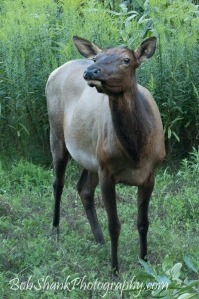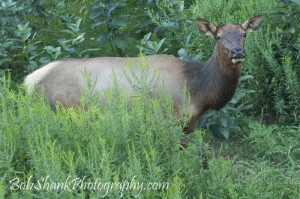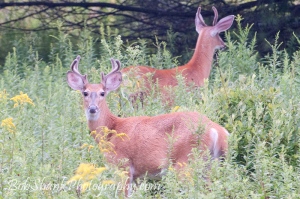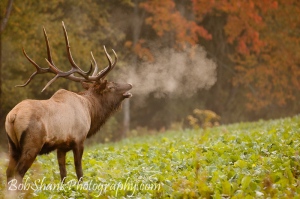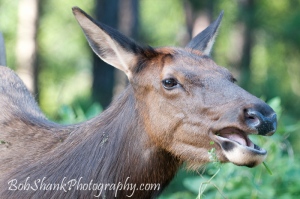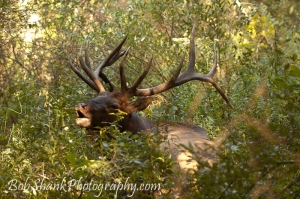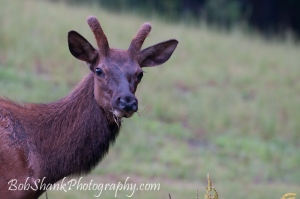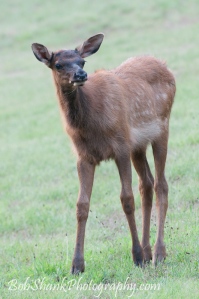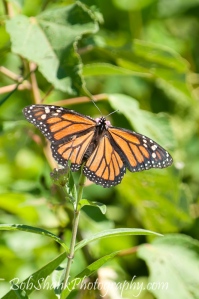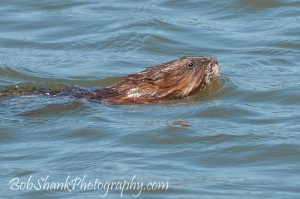Yesterday I shared the story of how my son, James, and I encounter a cow elk and were able to photograph it close up.
Today I am posting three more photos of this cow. Yesterday’s photos included much of the vegetation that the cow was actually eating. These photos today try to focus on the cow and highlight her without much distraction. Wildlife photography is difficult for many reasons: long, fast glass is needed and it’s expensive, animals are difficult to find and often don’t stay still very long, the best times for wildlife photography is at sunrise and sunset when light is low, and it is often hard to separate the subject from its camouflaged background. This last difficulty is my subject today.
How does the wildlife photographer separate the wild subject from its background? What tools in our camera can we use to assist in this endeavor?
Wide open f-stops are probably one of my most favorite tools to help accomplish this goal. Shooting wide open blurs the background and allows the viewer’s eye to focus completely on the subject. Large f-stops like f/2.8 are extremely helpful. Yes, they are expensive, but I find them irreplaceable in my wildlife photography. Another tool is the placement of the subject. We all know that backgrounds can literally ruin a photograph. So working with a clean background is very helpful. Setting the subject against a clear blue sky is golden! Or how about using the contrast of goldenrod or queen anne’s lace in a field to place your subject? Of course we do not literally place our subjects, but paying attention to the background can make a subject stand out loud and proud!
What tools do you use to separate your wildlife subjects from their habitat?
